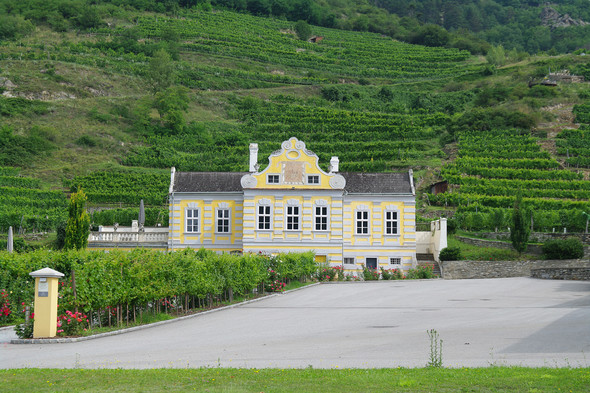How about a Riesling fermented on its skins in clay amphorae, a rosé fermented in small oak barrels or Grüner Veltliner Vin doux Naturel, its fermentation interrupted with the winery’s own Grüner Veltliner brandy?
Perhaps this all sounds a little exotic for the Austrian UNESCO world heritage site Wachau, where vines have been cultivated and wines produced traditionally for centuries. Steinfelder, Federspiel and Smaragd, produced predominantly from Grüner Veltliner and Riesling, grown on steep slopes, terraced with dry stone walls and overlooked by mountaintop fortresses. Yet, this is what has been going on at Domäne Wachau, a quality-oriented cooperative, comprising 250 families and 440ha and covering a third of the Wachau region stretching from Krems to Melk. 80% of production is Grüner Veltliner, with Riesling making up the lion’s share of the rest. However, they are also experimenting with new styles.
Quality of grapes is key for its premium wines, as the cooperative is a member of the Vinea Wachau Nobilis Districtus quality association, so it holds regular workshops for its members, whereby they can earn points.
The cooperative’s winery, perched on a picturesque rock overlooking the Danube, has historic roots. The monastery at Dürnstein started producing wine as it was short of cash and then realised it needed a bigger cellar and built a Castle Cellar outside Dürnstein. Probst Hieronymus Ülbacher was rather partial to wine, as evidenced by some of the pictures exhibited in the restored monastery, and it seems also to company, and realised that this Castle Cellar was a good place to invite friends, family and women.
The walls are covered with coins; when people came to the cellar and liked the wines, they left a coin, stuck to the wall. There are quite a lot of coins... Famous people who visited the winery leave their signatures on the barrels. Another curiosity is the huge 22,000 litre barrels which are too large to fit through the door, so they have to be taken apart and reassembled once inside.
In addition they have one of the biggest collections of old wines in Austria, going back to 1947. No further, unfortunately, as it was all guzzled by the Soviet soldiers, as was, apparently, perfume.
The winery has a place in history too, negotiations between Leopold Figl, Austrian Foreign Minister at the time and a good friend of the winemaker, and the Soviets took place here before the official contract signing at Schloss Belvedere in Vienna; two wines from the winery were served.
The new wines are going down well too, the Grüner Veltliner Vin doux Naturel is selling like hot cakes!






